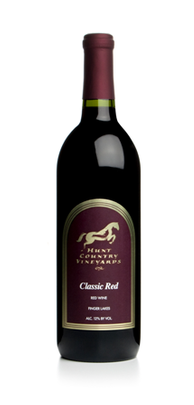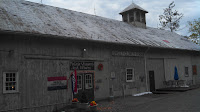Quick question? What is the oldest known vinifera wine grape? Muscat. Maybe. One from Greece - perhaps Agiorgitiko? Maybe. How about Rkatsiteli - where clay vessels in the Republic of Georgia have been found that contain Rkatsiteli seeds which date back to 6,000 BC (
A Short History of Wine). And Jancis Robinson
The Oxford Companion to Wine, 3rd Edition states that the wine tradition finds its roots in the valleys of the South Caucasus - its not far fetched to believe that Rkatsiteli is one of the first
vinifera wine grapes. Yet Rkatsiteli is just one of 500 unique Georgian grape varieties; perhaps one is even older. Moving forward, Georgian wine is mentioned in Greek literature,particularly when Jason finds "fountains of wine" there on his quest for the Golden Fleece. The wine culture is further encouraged in the 4th century AD by the spread of Christianity in Georgia by St. Nino from Cappadocia, who wore a cross made from vine stems. Being pottery experts, the Georgians mastered qvevri, clay vessels used to ferment and age wine.

My first contact with Georgian wine came through the
Georgian Wine House who poured at several successive
Washington D.C. Food & Wine Festivals.Then I learned that
Horton Vineyards grew Rkatsiteli in their Gordonsville Virginia vineyard and that they had gotten the idea from drinking Rkatsiteli from
Dr. Konstantin Frank Vinifera Wine Cellars. This ancient grape was one of the first planted to prove that vinifera grapes could survive and prosper in the Finger Lakes. I was hooked. Needing a red partner, I naturally turned to Saperavi, the most popular red Georgian wine grape that is used in popular semi-sweet to dry wines.
When asked to host
#winechat, Georgian wine and their American counterparts seemed a perfect topic. Representatives from the
Georgian Wine House,
Horton Vineyards,
Dr. Frank,
Standing Stone Vineyards, and
Castle Hill Cider agreed to participate.Why the last two? Standing Stone is the only grower of Saperavi in the United States and Castle Hill is the only American user of Kvevri vessels. Before the chat we sampled ten wines and used them as a reference during the conversation.


Teliani Valley Tsinandali 2010 (SRP $10). Georgian wines are usually blends and named for the region or village so Tsinandali is the appellation and the wine is composed of 80% Rkatsiteli & 20% Mtsvane. This wine is made in the Western style so fermented in stainless steel with no skin contact. The Mtsvane provides a more floral bouquet, while the Rkatsiteli provides structure and acidity. And at the price, a great bargain.
Vinoterra Rkatsiteli 2011 (SRP $13). This wine is produced in the traditional Georgian method where the wine is fermented and macerated on skins for 6 months within qvevri vessels. This skin contact produces an orange coloring to the wine which many falsely think as oxidized. Not here. The wine has a somewhat spicy, apricot aroma with a mild tannic finish. Since most Georgians consume white wine this one is made to hold up to red meats - particularly lamb. Did I mention Rkatsiteli translates to Red Horn? Interesting factoid.

 Dr. Konstantin Frank Vinifera Wine Cellars
Dr. Konstantin Frank Vinifera Wine Cellars 2010 Rkatsiteli (SRP $15). The first Rkatsiteli produced in the United States, this wine is slightly sweeter than the previous two. It has an intriguing grapefruit\orange aroma with a crisp acidic finish that balances the sugar.
Horton Vineyards 2011 Rkatsiteli (SRP $15). This wine is made from estate grapes growing right in front of the winery and a full Monticello AVA wine. 2011 was a poor growing year in Virginia so this wine has more skin contact because of the condition of the fruit. It is also semi-dry at 1.8% RS and possesses a similar grapefruit\orange aroma. Very flavorful with the required acids to balance the sugar.

Teliani Valley Unfiltered Saperavi 2007 (SRP $19). Saperavi is translated as dye or black (wine) and in the glass seems as dark as Norton. This wine is from the Tsinandali sub-region of the larger Kakheti region - which is responsible for a large percentage of Georgian wine production. Like the previous Teliani Valley wine, this one is made for the Western market (fermented in stainless steel; aged 6 month in new French oak). Here we first encountered the standard sour cherry nose representative of Saperaviand the muscular tannins. This is a big wine.
Vinoterra Saperavi 2008 (SRP $22). Moving to an even bigger wine that was decanted an hour before tasting, this wine was produced using a combination of new and traditional methods. The juice was macerated on their skins for 18 days; fermented in qvevri; then sealed for six months. At that point the wine is racked into 75% new French oak and 25% neutral oak. The result is a larger sour cherry profile on the nose and through the palette. The tannins are smoother - but the oak treatment is noticeable throughout.
 Vinoterra Saperavi Selection 2009
Vinoterra Saperavi Selection 2009 (SRP $24). Here is a 100% traditional Georgian wine made from 50 year old vines and fermented and aged in qvevri. No oak treatment. The result (also decanted one hour ) is a surprisingly fruity and earthy wine, with lower tannins and more finesse. Seems like the oak in the 2008 may have masked the earthy characteristics of the fruit. This was my favorite Saperavi for the evening.
 Standing Stone Vineyards
Standing Stone Vineyards The Dark Red (SRP $30). The only Saperavi produced in the United States, the winery first thought of this grape as a side-kick to Pinot Noir. When they learned how cold hardy and productive it was, a single varietal wine was in the cards. This wine has the traditional sour cherry nose, but with a less tannic and more fruity profile than the Georgians. This is a party fun - easy drinking.
Teliani Valley Kindzmarauli 2011 (SRP $15). This is a semi-sweet Saperavi made in the Kindzmarauli micro zone in Kakheti. Grown at a higher elevation this wine has great acidity and all natural sugar - coming in at 2.5% RS and 11.5% alcohol. This is an easy drinking wine and is no surprise its the top seller in their portfolio. Dark chocolate, here we come.
A very nice assortment of wines - both from the Republic of Georgia and the United States. And with affordable SRPs, there's no excuse to start your Georgian wine experience. Cheers.










































